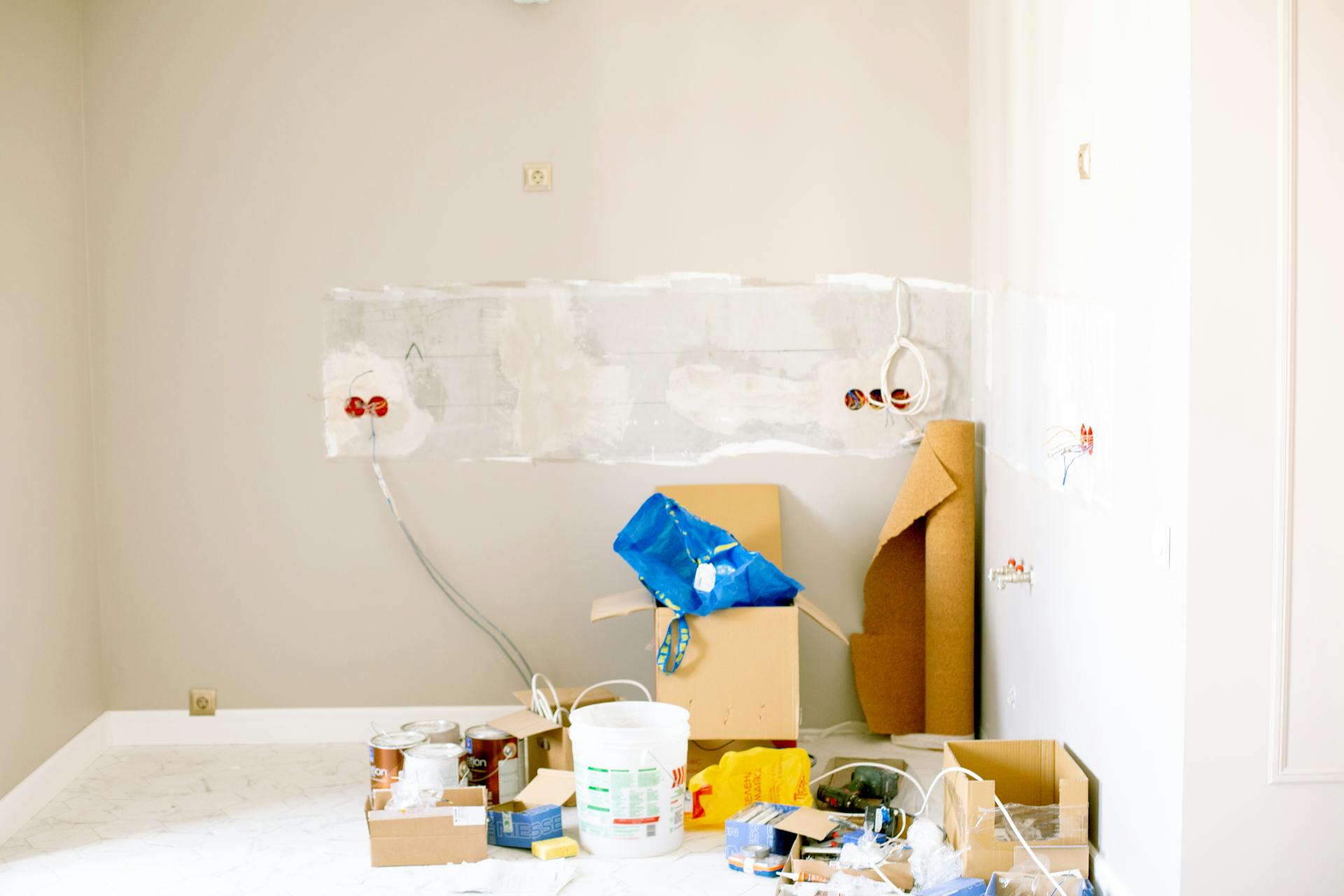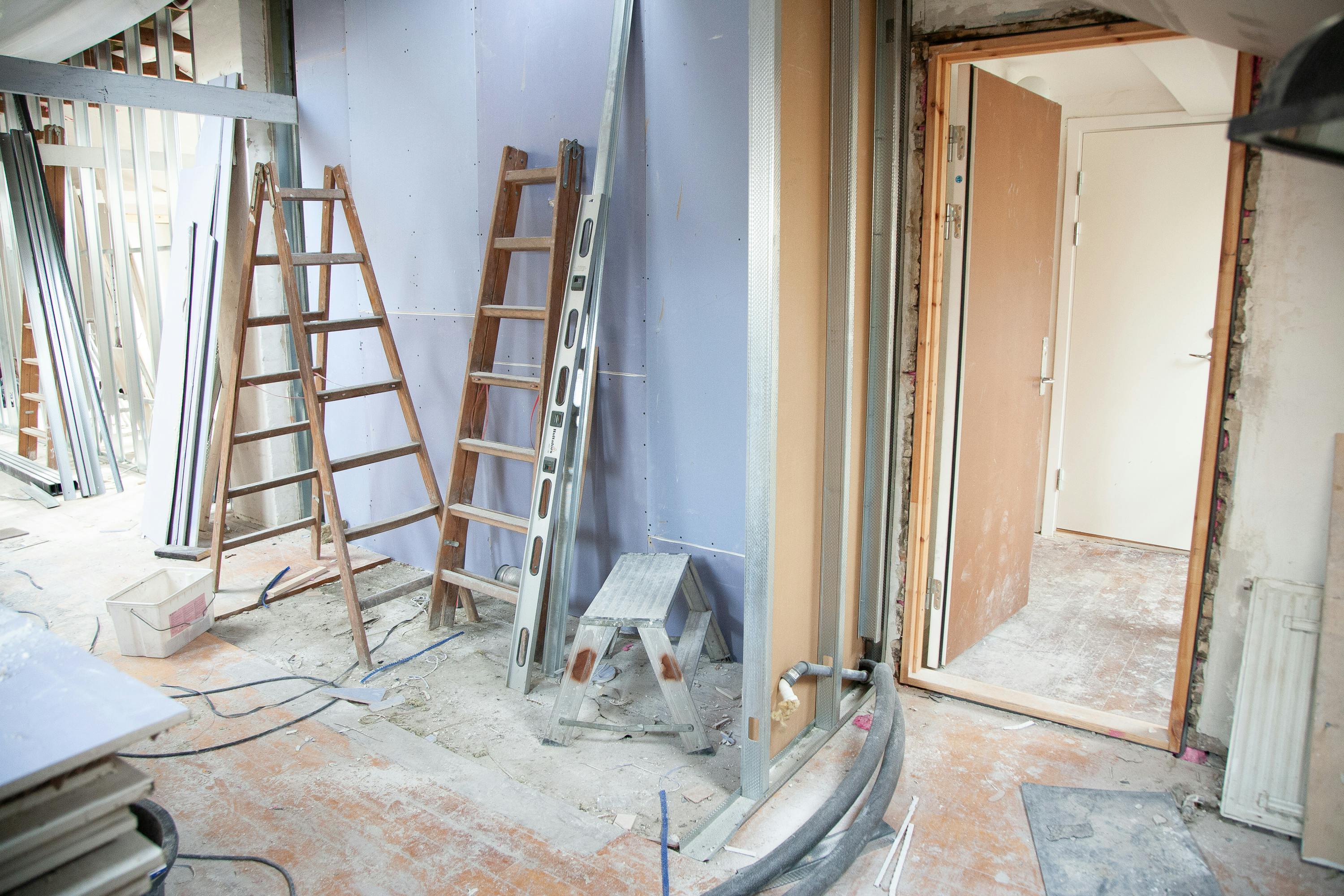Tape Solutions for DIY Home Improvement
DIY home improvement is a great way for anyone with at least some handy skills to save money, learn about the various aspects of home improvement, and have fun. You can also learn how to use tools, how everything in the home works, and the numerous materials you'll need. One of the most ubiquitous materials in home improvement is tape.
There are many different other tapes for home improvement as well. Some have highly specific use cases, while others are more versatile. Think of all the uses for just duct tape alone!
Understanding Different Types of Tapes
Each tape in this article that you will use for home improvement has unique properties and common scenarios where you would use it.
The following are major characteristics and properties of some commonly used tapes and how the tape is typically used:
- Painter's tape has a very low tack and leaves no residue.
- Masking tape is stronger than painter's and is suitable for labels or light repairs.
- Gaffer tape has a stronger adhesive than masking tape but leaves no residue, making it a good floor marking tape or for cable management.
- Duct tape leaves a residue but is a powerful tape for many purposes.
- Glow-in-the-dark tape can be used for safety tape. It comes in for 6, 10, or 24 hour charges.
- Automotive tape can be reflective so other vehicles can see the car.
- Plumber's tape is typically only used on pipe threads.
- Electrical tape is used on electrical connections, switches, fixtures, and outlets behind the scenes.
- Double-sided tape, or double-coated tape, has adhesive on both sides of the backing and can be used for mounting purposes.
Project Ideas

The following are just a few ways a DIYer or homeowner can use various types of tape in and around the home, in interiors or exteriors, for repairs, decoration, or fun projects.
Sealing and Insulating Windows
Foam tape can be used as insulation or a vapor and temperature barrier, making it a good choice for weatherproofing. Weatherstripping tape is a one-sided tape with varying thicknesses that helps seal off air and hot or cold temperatures around windows and doors.
Fixing Wall Cracks with Tape
While large holes in the wall may need a professional to repair or replace, small holes and cracks in your wall are repairable by the average homeowner. Fiberglass mesh tape is a mesh that you can use to fix those wall cracks and small holes. You would attach the sticky tape to small holes in your drywall or plaster walls and apply a wall compound to repair the crack.
To use mesh tape to repair a wall:
- Purchase ready-mixed wall compound, a drywall knife, sandpaper, and mesh tape.
- Use the sanding sponge or sandpaper to clean the area around the damage.
- Measure and cut mesh tape to extend beyond the damage.
- Apply the tape so it sticks to the wall over the crack or hole.
- Use the knife to apply a thin, smoothed-out layer of compound.
- Sand the compound when dry.
- Continue adding layers until you can no longer see the tape through the compound and the wall is sanded smooth.
- Paint a layer of primer before painting the wall.
DIY Decor Projects
Some creative uses of tape include:
- Printing almost any design or text for any occasion on tape with custom-printed tape
- Scrapbooking and adhering items to a scrapbook with scrapbooking tape
- Applying decorative or colorful tape to your paper projects, such as books for book-binding
- Making a wallet out of duct tape
- Making a foam tape door stopper to prevent noise
- Creating a wall art installation with colorful tape in geometric shapes
- Using masking tape to make a papier-mâché framework
- Sculpting a sculpture made entirely out of tape
- Creating a star field on a ceiling out of glow-in-the-dark tape
- Applying reflective tape to your mailbox or retaining wall on your street for higher visibility
- Using white tape to write on for labeling
- Putting thick foam tape around your air conditioner to seal air and temperature gaps
- Using color tape of any kind for color-coding items around the house
Part of improving your living space also involves hanging and installing decorations. Be careful when using tape for mounting purposes — you don't want to damage the wall surface or remove paint. Use masking tape for temporary or holiday decorations and double-sided tape for more permanent installations.
Organizing Cables and Wires
Modern home offices, with electronics such as TVs, monitors, computers, speakers, and so forth, can be a cable management nightmare. Disorganized cables that go every which way can be unsightly but also dangerous, as they can be trip hazards.
Use the following tape for organizing cables and wires:
- Gaffer tape: Common in the film, photography, and TV industry, gaffer tape is an inconspicuous tape that leaves no residue.
- Hook and loop tape: This tape is commonly referred to by one of the major brands, Velcro. A special tape is made just for cable management.
- Masking tape: This tape is suitable for temporary cable management as it is easy to remove without leaving a residue on equipment.
- Duct tape: Use duct tape as a last resort to manage cables, but don't attach it to painted surfaces.

Painting Projects
The number one tape you'll need for your painting projects is masking tape. As the name suggests, masking tape masks a surface to protect the surface. In this case, the masking tape protects the underlying surface from getting paint on it. This allows you to paint a perfectly straight line and leave the area under the tape unpainted.
Masking tape not only protects the underlying surface from paint but also does not damage it when removed. The tape has a much lower tack than other tapes, so it is easily removed without marring the surface or leaving a residue.
Plumbing and Pipe Thread Sealing
DIY enthusiasts may not realize that plumbing tape also belongs in their toolbox. Plumbing is a significant part of home improvement. Without adequately sealed plumbing fixtures, leaks can lead to water damage and mold, causing expensive repairs or illnesses.
Many of the pipes in your home are connected with glues or solvents, such as PVC drain pipes, or with valves or crimped connections. Some connections have threads that connect to pipe fittings or hex nuts that get tightened. You'll need so-called plumber's tape for those connections. Choose PTFE pipe thread seal tape to wrap thread connections before installing pipes or pipe fittings.
Electrical Tape
Another tape that may be taken for granted by DIYers and homeowners is electrical tape. It is often unseen and tucked away in electrical boxes or behind covers, but its importance cannot be understated. The tape helps to insulate exposed metal that may be connected to a live wire, safely bundle electrical cables together, and hold electrical connections tightly together, preventing arcs and electrical fires.
Advanced Tips: Maximizing Tape Effectiveness
Consider these advanced tips to maximize tape effectiveness:
- Research before purchasing tape to ensure you buy the right product.
- Always read the tape's packaging for instructions on how to install the tape.
- Layer tape for enhanced durability or increased effectiveness.
- Remove the tape slowly and carefully to avoid damaging the surface or paint.
- To remove tape residue without damaging the surface, apply WD-40 or a vinegar and water solution and wipe away the residue.
Common Mistakes To Avoid
Some common mistakes to avoid include:
- Choosing the wrong tape: To avoid mistakes, research your taping application and select the right tape.
- Using too much tape: For example, plumber's tape should only be wound three times around the threads.
- Not using enough tape: Some instances require adequate coverage, such as painter's tape.
- Leaving tape in the sun: Some tape, such as duct tape, does not do well in ultraviolet light in the long term.
- Not buying enough tape for your project: It's better to have extra tape for the next project than run out and not be able to complete a job.
Future Trends in Tape Technology
Technology is constantly changing and improving many aspects of our daily lives. Home improvement is one area where new products are continually being developed to make repairs and household maintenance easier or more effective.
Keep on the lookout for new and improved tape technologies such as:
- Effective glow-in-the-dark tape
- Safety tape with anti-skid treads
- Custom printing technologies that allow you to use your own image files
- Advanced weatherproofing tape
- Advanced tape specifications, such as protection against heat and high-voltage
Get Your Tape at Tape Jungle
As you can see, many types of tape exist for DIYers and homeowners. Each tape has its purpose, unique properties, and limitations. Once you've learned the basics of home improvement, apply the advanced techniques in this article to improve your tape's longevity and maximize its effectiveness.
Choose Tape Jungle to get any of the above tapes for your one-stop-shop ultimate tape provider. Contact us if you have any questions, and we'll be happy to help you choose the best tape for your application.


 Canadian Dollar
Canadian Dollar
